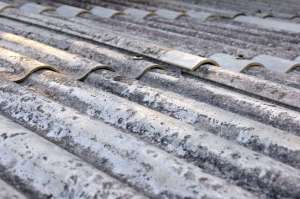Asbestos is a common component of construction and insulation material. Unfortunately, it is also highly toxic. It is a known carcinogen that leads to mesothelioma- a rare form of lethal cancer. Because of this, there are regulations on its use, whereas some products are banned altogether. Countries like China, Russia, Mexico, and India now exclusively use asbestos products. However, asbestos hasn’t completely disappeared from the US. If you live in an older home, there are chances you have asbestos in the house.
You may risk exposure to asbestos if you put your house through renovation work. This is why it is essential to know what asbestos products look like and how you can avoid them. It is also necessary to know what materials in houses contain asbestos so you can safely renovate. The last thing you want is inhaling fibrils, knowing it is harmful in the long term. Through this article, we will ensure you stay safe. Here is how you can take care of yourself and know what products are risky.
What are some asbestos products in use?
Commercial asbestos products are in use by different types of workers in various industries. These include power generation, construction work, and automotive repair, to name a few. Out of these, construction workers are at a higher risk of exposure. This is because construction and home materials usually contain more asbestos than other products. If you wish to learn more about how it can cause mesothelioma, it is best to start with the sources of asbestos. Here are some of the most common asbestos products in use:
-
Automotive parts
Cars need maintenance now and then. Some parts gather dust and need proper replacement. However, don’t try car repair work at your home unless you know what you’re doing. Brake pads, clutches, and hood liners all contain asbestos. You can breathe them in a while doing repairs without proper protection.
-
Tiles and ceilings
Tiles, vinyl flooring, and ceilings in homes constructed before 1980 contain asbestos. Anytime you scrape these surfaces while renovating, you risk exposure by making fibrils airborne.
-
Cement
Asbestos-containing cement is used in building materials because the fibers provide strength. It does so by adding very little extra weight. Asbestos is also fire-resistance, and so it is used for construction.
-
Textiles
Asbestos is used in several domestic textiles to give them heat resistance and insulation properties. You may have one or more of these products at home. Everyday items include blankets, firefighting suits, and ropes.
-
Home appliances
You may be using asbestos-laden products without knowing. Since asbestos is such a durable mineral, it is commonly used inside appliances. These appliances may include stoves, ovens, toasters, and coffee pots. Even your hairdryer contains a trace of asbestos.
-
Makeup
Makeup also contains traces of asbestos. Products such as eye shadows, blushes, and other products that have the powder in them contain asbestos. The more you use such products over your skin, the riskier it can get. Inhaling asbestos can cause a long-term build-up of cancer. Researchers have also found traces of asbestos in children’s makeup, so many stores had to recall them.
-
Talcum Powder
Naturally found talc and asbestos deposits are often close to each other. As a result, talc becomes contaminated, and when industries use it, they spread the contamination. Everyday cosmetic items that use talc are makeup and baby powder. This is why parents now exercise caution when buying baby products to use.
-
Electrical Insulation
Asbestos is in wire insulation and cable wrap. They provide excellent protection against fire and heat. Unfortunately, with time, asbestos gets frayed, and the fibers get exposed. Asbestos is also in electrical boards. However, with time the product is prone to damage and degradation. When this happens, asbestos exposure becomes a possibility.
What made asbestos so popular?
Asbestos is a naturally occurring mineral with unique chemical and physical properties. It is durable, resistant to heat and chemical reactions. Asbestos also has an inert chemical composition, making it less likely to react with other compounds. It also contains spacing between the fibers that reduces heat and fire conduction. Construction workers prefer it because it adds strength to cement without making it denser. Here are some properties of asbestos that make it a popular component in products:
-
Abundant
Asbestos is naturally found in many parts of the world. Since it is not scarce, it is pretty affordable to use.
-
Fibrous
Industries can pull asbestos apart into fibrous strands. These strands have a wooly consistency and work like any other fiber.
-
Durable
Asbestos is resistant to heat, electricity, and chemicals. These properties make it ideal to use in various appliances and construction materials.
-
Carcinogenic
Unfortunately, this is also a property of asbestos that makes it unfavorable. However, these properties have steadily gotten this mineral banned. The microscopic asbestos fibers don’t break down easily in the human body. The more you inhale them, the build-up increases in your body. Then, asbestos fibers cause chronic inflammation and scar tissue, which ultimately lead to cancer.
What asbestos-containing products are banned?
There are many commercial products containing asbestos that you can no longer use. This is because these products are hazardous and significantly increase the risk of mesothelioma among people exposed to them. Laws that prevent you from using asbestos products can penalize you if you still use them. To give you more context, these are the products:
- Asbestos-containing flooring
- Asbestos paper
- Pipes and insulation
- Any spray coating that has more than 1% asbestos
- Asbestos wall products
- Asbestos fireplace decorations
- Pharmaceutical filters
What can you do if you have been exposed to asbestos?
If you feel your house has too many asbestos products, you need to consult a professional. Asbestos has microfibers that, if inhaled, can give you long-term health problems. These professionals have equipment that allows them to inspect surfaces and air spaces. Asbestos should never be scraped or removed as this can cause the fibers to become airborne and spread. Instead, let a professional repair/replace exposed spots. It would help if you didn’t go for a complete renovation either unless you’ve exhausted other options. The key takeaway is not to interact with any asbestos product unless you know what you’re doing. The same holds for renovation projects. It would help if you let professionals guide you on how you can renovate your space. If you feel you have had prolonged exposure to asbestos, you need to consult a doctor and get yourself checked.
Wrap up
Asbestos was a popular raw material for several products back in the day. However, because of its carcinogenic nature, it steadily got banned. It is still used today in some commercial products, but only under strict regulations. Asbestos earned its popularity due to its properties. It was the ideal product that could withstand heat and give materials strength. If you feel like your house contains asbestos, call in a professional. It would be best to conceal or, in the last resort, remove asbestos safely. Last but not least, if you feel you are at risk of exposure, consult a doctor at your earliest.











